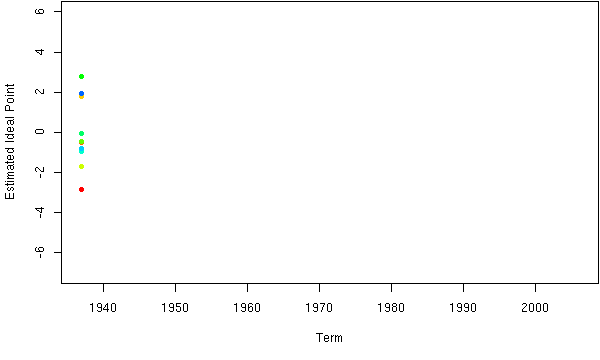







Measuring the relative location of U.S. Supreme Court justices on an ideological continuum allows us to better understand the politics of the high court. In addition, such measures are an important building blocking of statistical models of the Supreme Court, the separation of powers system, and the judicial hierarchy. This website contains the so-called "Martin-Quinn" measures of judicial ideology developed by Andrew D. Martin (Office of the Chancellor, Washington University) and Kevin M. Quinn (School of Law and Department of Quantitative Theory and Methods, Emory University).
The "Martin-Quinn" scores are estimated for every justice serving from the October 1937 term to the present. Currently estimates are available through the October 2022 term.

 This material is based upon work supported by the National Science Foundation under Grants SES-01-35855 and SES-01-36679, the Center for Empirical Research in the Law at Washington University. Neither the National Science Foundation nor Washington University bear any responsibility for this content.
This material is based upon work supported by the National Science Foundation under Grants SES-01-35855 and SES-01-36679, the Center for Empirical Research in the Law at Washington University. Neither the National Science Foundation nor Washington University bear any responsibility for this content.


